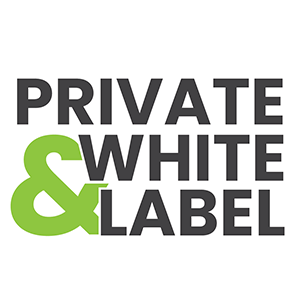The Potential of Cannabinoids in Treating Addiction: A Comprehensive Guide
Introduction
The field of addiction treatment is undergoing a revolutionary transformation, particularly with the growing interest in cannabinoids as potential therapeutic agents. With increasing awareness of cannabis use and its associated challenges, researchers are tirelessly exploring how cannabinoids might aid in treating addiction. This comprehensive guide will provide you with an informative look at the current research landscape, the benefits that cannabinoids may offer, and the complexities surrounding their use in addiction treatment.
Understanding Cannabis Use Disorder (CUD)
Cannabis Use Disorder (CUD) is a condition that affects many people, manifesting through symptoms like cravings, relationship troubles, deteriorating mental or physical health, and withdrawal symptoms when not using. Diagnosis hinges on the severity of these symptoms, categorized into mild, moderate, or severe.
Withdrawal and Its Challenges
CUD can lead to withdrawal symptoms that range from mild to severe. These symptoms can include heightened anxiety, depression, irritability, and challenges with sleep. The intensity of withdrawal often peaks within 48 to 72 hours after quitting cannabis and can linger for weeks. This complicated withdrawal experience significantly complicates the path to recovery and can increase the likelihood of relapse.
Behavioral Therapies for CUD
As exciting as the possibility of cannabinoids in treating addiction may be, it’s essential to ground our understanding in established behavioral therapies. Here’s a brief overview of the most effective therapies currently in practice:
- Cognitive Behavioral Therapy (CBT): CBT focuses on the relationship between thoughts, feelings, and behaviors, helping individuals develop coping strategies to manage triggers. Numerous studies have shown that those undergoing CBT report reduced cannabis use.
- Motivational Enhancement Therapy (MET): MET is designed to enhance an individual’s motivation to change by addressing ambivalence and working on personalized goals for recovery. Evidence indicates that MET can positively impact treatment outcomes and success rates.
- Contingency Management (CM): InCM, individuals receive tangible rewards, such as gift cards or vouchers, after achieving specific goals like reducing cannabis use. This approach serves to reinforce positive behavior changes.
These behavioral therapies form the backbone of effective intervention strategies, addressing both the psychological and behavioral dimensions of addiction.
The Role of Cannabinoids in Treating Addiction
Efficacy and Safety of Medical Cannabinoids
Research into cannabinoids as treatment options for CUD is actively developing. Let’s dive deeper into the different types and their specific roles:
- Cannabinoid Receptor Agonists: Medications like dronabinol and nabilone target the CB1 receptor but have shown limited therapeutic benefits in directly treating CUD. Instead, these drugs are primarily utilized for nausea management in patients undergoing treatments for conditions such as AIDS and cancer.
- Endocannabinoid Modulators: Substances like nabiximols and cannabidiol (CBD) have captured the research spotlight for their potential effectiveness. Clinical trials suggest that these compounds may reduce cannabis use, improve abstinence rates, and alleviate withdrawal symptoms without major side effects.
Promising Treatments
Leading the charge in cannabinoid research is a focus on several promising compounds:
- AEFO117: This recently studied drug selectively inhibits the CB1 receptor, showing promise in minimizing the rewarding aspects of cannabis. Clinical trials indicate it reduces both the positive mood effects of cannabis and the likelihood of continued use among everyday consumers without resulting in withdrawal symptoms.
- Cannabidiol (CBD): CBD has emerged as a key player. Its potential lies in the ability to reduce cannabis use while simultaneously promoting abstinence. Importantly, it does this without the psychoactive effects commonly associated with THC—making it a safer therapeutic choice.
Using Marijuana as a Harm Reduction Strategy
The discussion surrounding marijuana’s role in harm reduction is contentious. Proponents argue it could serve as a less damaging alternative for those grappling with severe addictions. However, empirical evidence regarding its long-term efficacy as a treatment for other substance use disorders remains absent. Some studies even suggest that utilizing marijuana for managing cocaine withdrawal could exacerbate symptoms and increase cravings.
Future Research and Funding
The National Institute on Drug Abuse (NIDA) is at the forefront of funding exploratory studies aiming to assess the use of synthetic THC and CBD for various addiction treatments. Such research is crucial in establishing a solid evidence base and clarifying the therapeutic potential of cannabinoids in addiction recovery.
Conclusion
The exploration of cannabinoids as a treatment for addiction presents a complex yet exciting horizon. While traditional therapies like CBT, MET, and CM remain steadfast in their application, the evolving landscape of cannabinoid research holds intriguing possibilities for future treatment methodologies.
Key Takeaways
- Behavioral Therapies: Techniques such as CBT, MET, and CM effectively treat CUD and remain foundational in addiction therapy.
- Cannabinoid Therapies: Endocannabinoid modulators like CBD show promise in reducing cannabis consumption and improving withdrawal experiences.
- Future Research: Ongoing studies funded by NIDA aim to strengthen the evidence for cannabinoid use in treating addiction.
- Caution: Using marijuana as a harm-reduction strategy lacks long-term scientific support and may bring adverse effects.
Actionable Tips
- Seek Professional Help: Always consult healthcare professionals for personalized treatment plans that incorporate effective behavioral therapies alongside cannabinoid treatments if necessary.
- Stay Informed: Engage with credible sources and remain updated on current research findings pertaining to cannabinoids and addiction.
- Supportive Environment: Joining support groups and sober living communities can greatly improve the chances of successful recovery.
Through integrating accessible information and narratives grounded in real-world scenarios, this guide aspires to not only educate but also inspire curiosity about the potential of cannabinoids in the realm of addiction treatment.





















